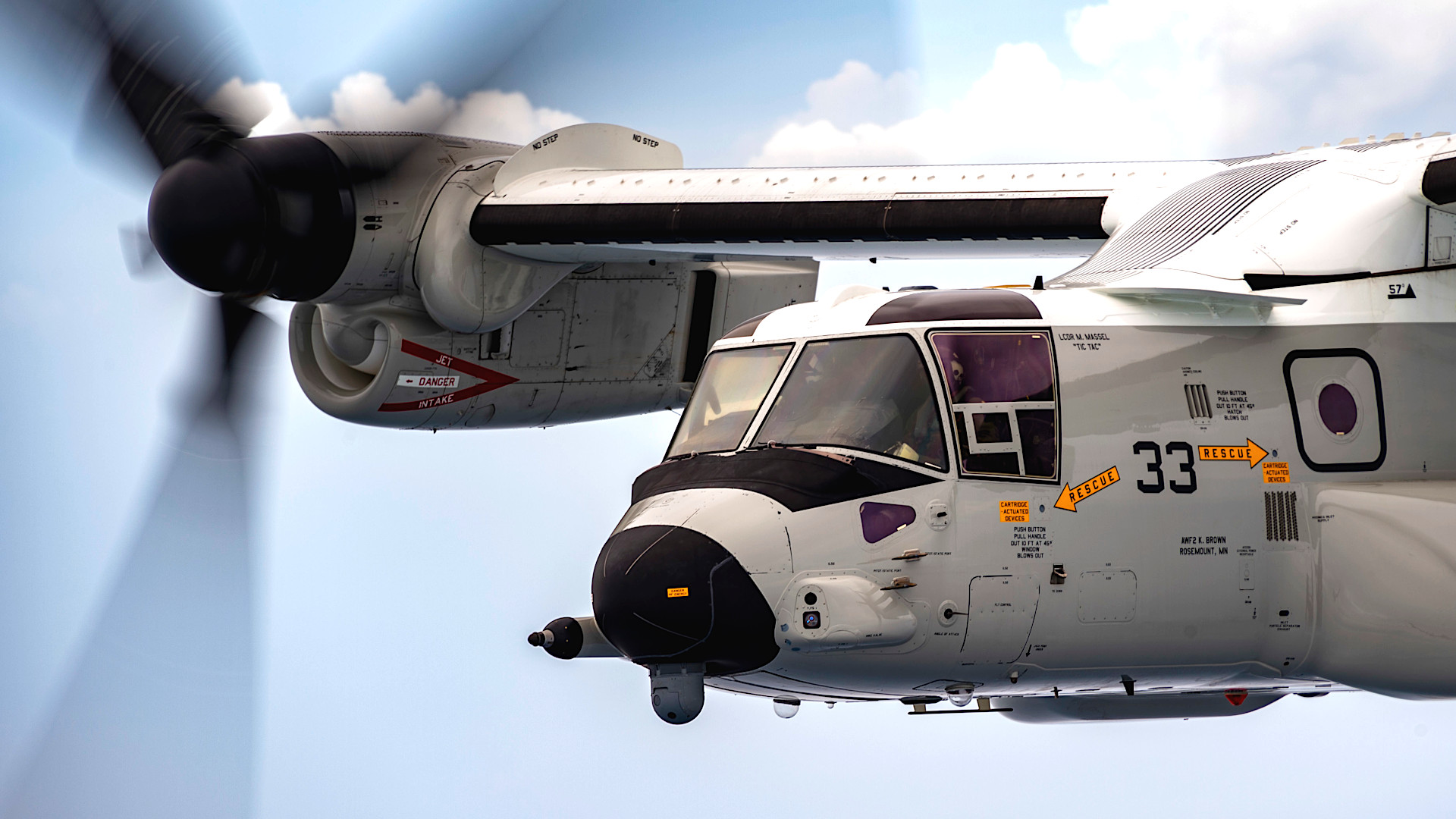The U.S. Navy is actively exploring using its CMV-22B Osprey tilt-rotors in other roles beyond carrier onboard delivery, or COD. This could include acting as backup communications nodes in the event that a carrier air wing’s E-2D Hawkeye airborne early warning and control aircraft are unavailable for any reason.
Vice Adm. Kenneth Whitesell, currently the head of the Navy’s Naval Air Forces and the U.S. Pacific Fleet’s Naval Air Force, a combined position commonly referred to as the “Air Boss,” talked about the CMV-22B’s ongoing evolution during a panel discussion yesterday at the Navy League’s annual Sea Air Space conference and exhibition.
The Navy declared that the CMV-22B, acquired originally as a replacement for the aging C-2A Greyhound COD aircraft, had reached initial operational capability in December 2021. The service is currently looking to acquire a total of 44 of these tilt-rotors, down from its original planned fleet size of 48. As of December 2022, there were 19 CMV-22Bs in Navy service, two of which were set aside for test and evaluation work.

“The CMV-22 [is] a game changer for us,” Vice Adm. Whitesell said during the panel discussion, something he has said about the aircraft before. However, now things have gotten “to a point where we are rewriting the CONOP [concepts of operations] for CMV-22. It is no longer going to be a COD platform.”
“If you look at the CMV-22 is designed with the actual bladders and fuel capability, the weight capability to travel stuff around, because it’s meant to be able to support us in the Western Pacific,” Whitesell added when asked by a member of the audience to elaborate on the CMV-22’s expanded utility. He further explained those capabilities have opened up new possibilities for what the Navy can do with its variant of the Osprey.
“If [an] E-2D is not available, where can [a] CMV-22 be used as a communications [node]?” he offered as one thing that’s being looked into now. The E-2D serves primarily as an airborne early warning and control platform but also provides critical advanced networking and data fusion for a carrier strike group and its aircraft.
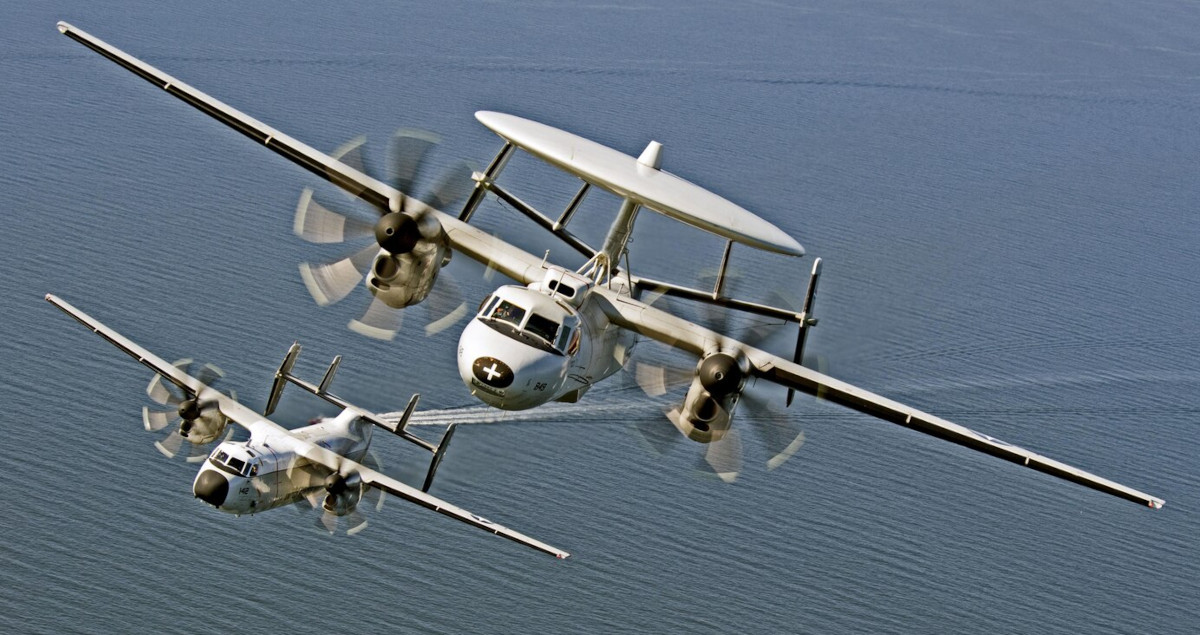
While Whitesell did not elaborate on what this configuration might entail, it’s not hard to imagine the development of a roll-on/roll-off communications package that could fit into a CMV-22B’s main cargo bay and linked to an array of antennas, which could also be modular. Modern software-defined radios with relatively small form factors exist now that can provide very robust communications and data-sharing capabilities.
When it comes to add-on electronics packages for Ospreys, it is also worth noting that the U.S. Marine Corps has already demonstrated a roll-on/roll-off version of the Intrepid Tiger electronic warfare system for use on its MV-22Bs.
Vice Adm. Whitesell did not indicate that there are any plans currently for the CMV-22B to be able to take over any of the E-2D’s other airborne early warning or command and control functions, which you can read more about here.
It is interesting to note that there has been discussion in the past about an airborne early warning version of the Osprey. The Marine Corps had expressed interest in this being a core mission for a future vertical takeoff and landing capable drone to be developed under a program called the Marine Air Ground Task Force Unmanned Aircraft System Expeditionary, or MUX. That service is now looking to integrate an airborne early warning radar onto its growing fleet of MQ-9 Reaper drones, according to the 2022 Marine Corps Aviation Plan.
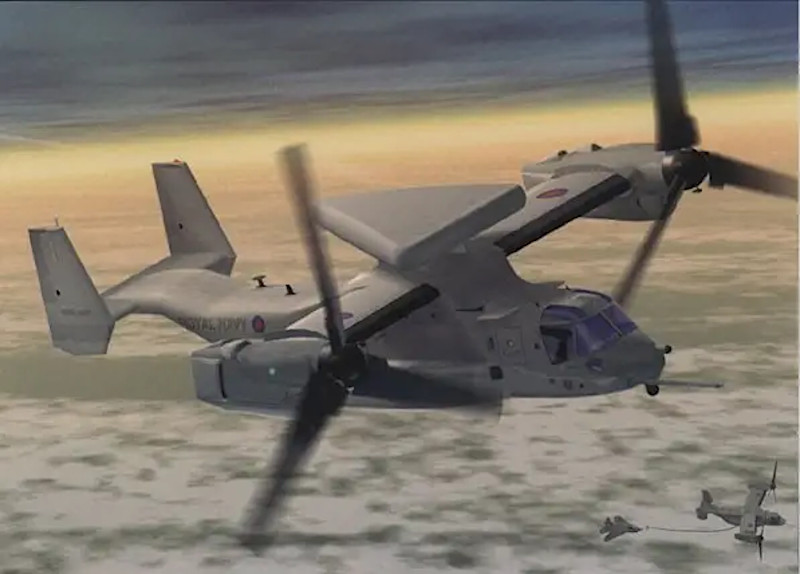
During the talk yesterday, the Navy’s air boss did also raise the possibility of the CMV-22B taking on additional roles, possibly in support of future Marine expeditionary and distributed operations. For Navy carrier air wings, the introduction of CMV-22B has already opened the door to new logistics concepts of operations given that the aircraft does not require traditional runways to operate from, unlike the C-2A. This also allows the Osprey to make deliveries directly to other ships within a carrier strike group. With the Greyhound, cargo had to first be brought to the carrier and then helicopters would distribute it elsewhere in a ‘hub-and-spoke’ method.
In addition, the Navy’s variant of the Osprey has a greater operational range than the Greyhound and can be refueled in mid-air. The tilt-rotor can land on a carrier’s deck with a higher gross weight, including fuel and cargo, and can carry heavy and outsized externally, too.
A CMV-22B could conceivably supplement the Marine Corps’ own MV-22Bs during future operations or support Navy elements outside of the context of a carrier strike group. With its original COD focus, the Navy’s Osprey variant is already well set up to move fuel, spare aircraft parts, and other cargo. The service has already shown that CMV-22Bs can be used to refuel other aircraft at forward locations on land.
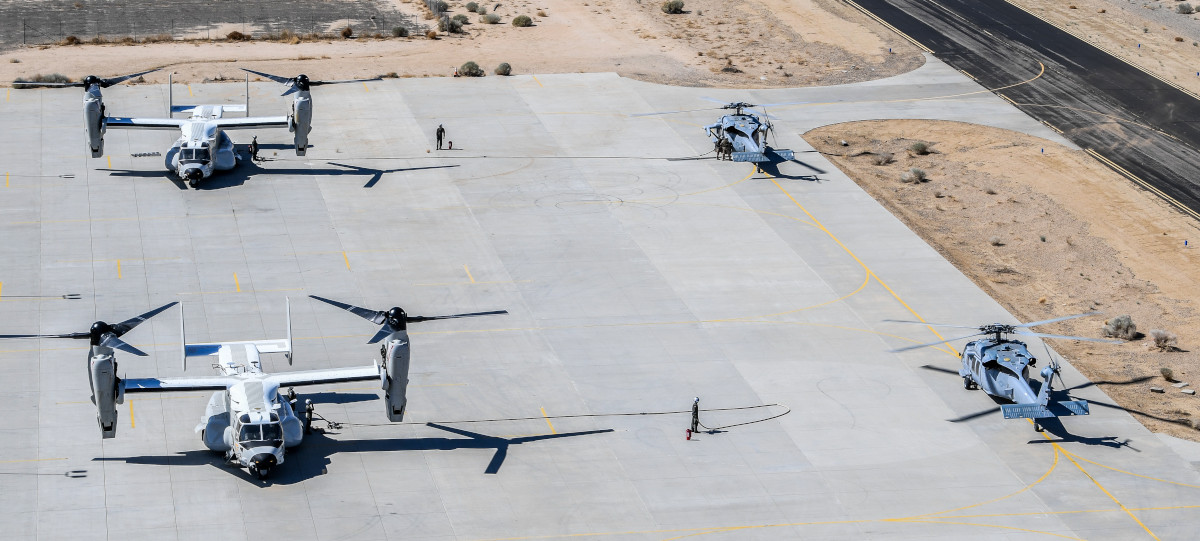
This could all be very valuable for the Marines, which are in the midst of a complete overhaul of their force structure around new expeditionary and distributed concepts of operations. This is centered on the idea of relatively small, but robust Marine contingents being able to readily deploy to forward areas, hold enemy forces in those zones at risk, and then be capable of redeploying just as quickly as the situation demands. Combat aviation continents, including F-35B Joint Strike Fighters, MV-22B Ospreys, and helicopters, that can operate from remote and austere locations are central to this Expeditionary Advance Base Operations (EABO) concept, as you can read more about here.
CMV-22Bs might similarly be used to help Navy tactical combat aircraft from a carrier deploy to a forward location ashore.
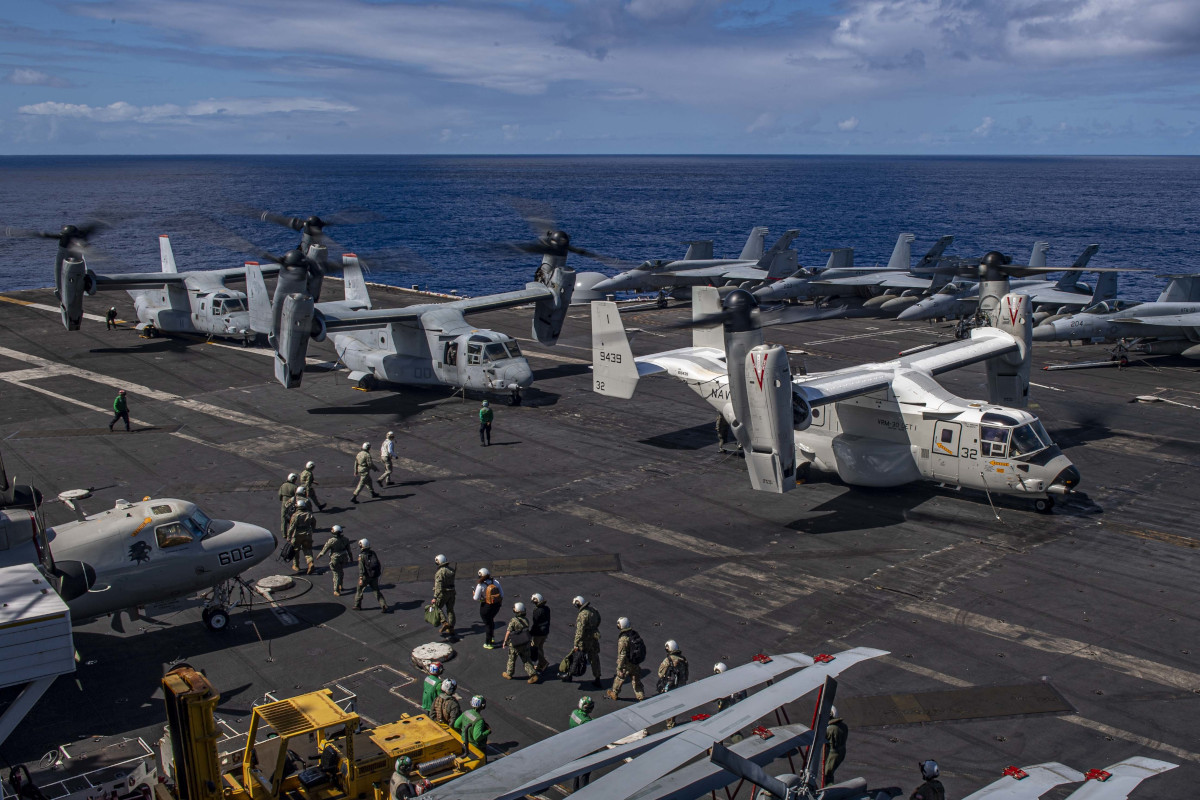
Yesterday’s panel made it clear that the demand signal within the Navy for CMV-22Bs to support intra-threater logistics, in general, is likely to be massive, especially given the aircraft’s runway independence.
“What can we hang out the back of a CMV-22?” Vice Adm. Whitesell rhetorically at another point in yesterday’s panel discussion.
Though he did not elaborate on this, the CMV-22B, like all Osprey variants, has a rear ramp where different mission packages could be installed. A probe-and-drogue mid-air refueling kit, where the line extends out the back from the main cargo bay, already exists. Radars and other sensor systems that hang out the back have been proposed in the past.
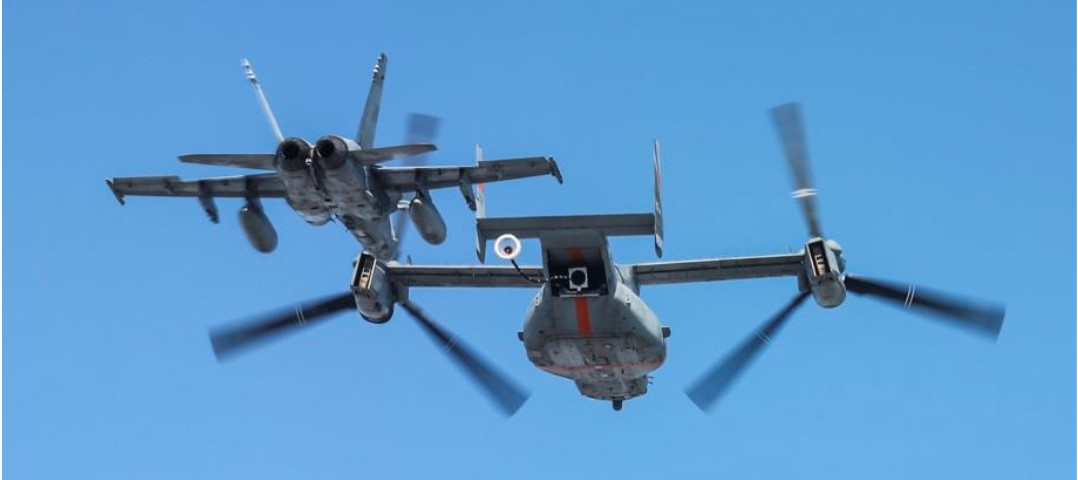
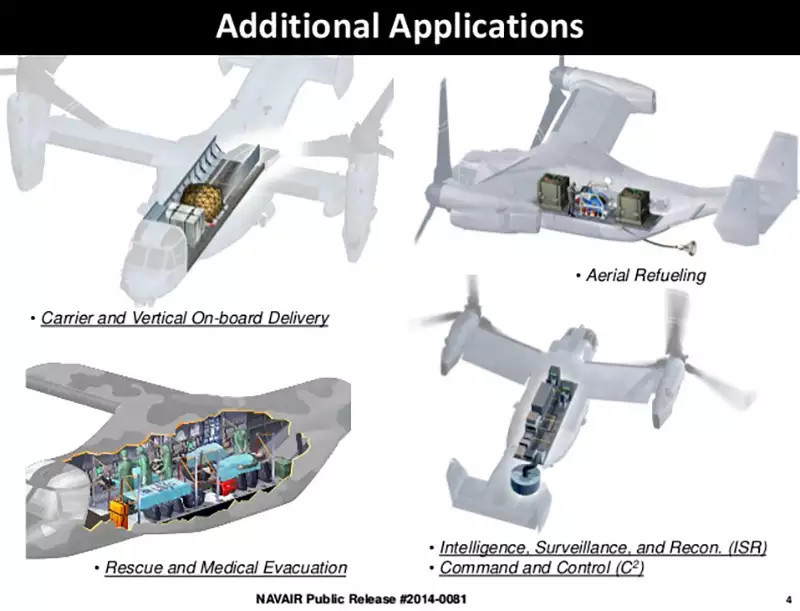
CMV-22Bs could be configured to eject a host of expendable payloads out the back, including sonobuoys, small drones, and even munitions. The current standard armament configuration for the Marine Corps’ MV-22B, as well as the Air Force’s CV-22B, is just a pintle-mounted machine gun firing out the rear. However, the Marines have explored more seriously weaponizing the MV-22B in the past.
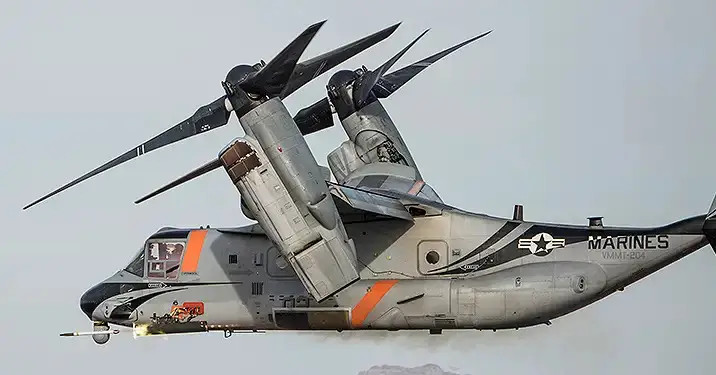
All told, it still very much remains to be seen exactly how the role of the Navy’s CMV-22Bs might expand in the future beyond helping carriers communicate. How this might impact the service’s future budgets, including whether it might change course and decide to acquire 48 Ospreys as it originally planned, is an open question, too.
What is clear is that the service is interested in taking advantage of the new capabilities the Osprey provides for missions well beyond simple carrier-based logistics.
Contact the author: joe@thedrive.com
